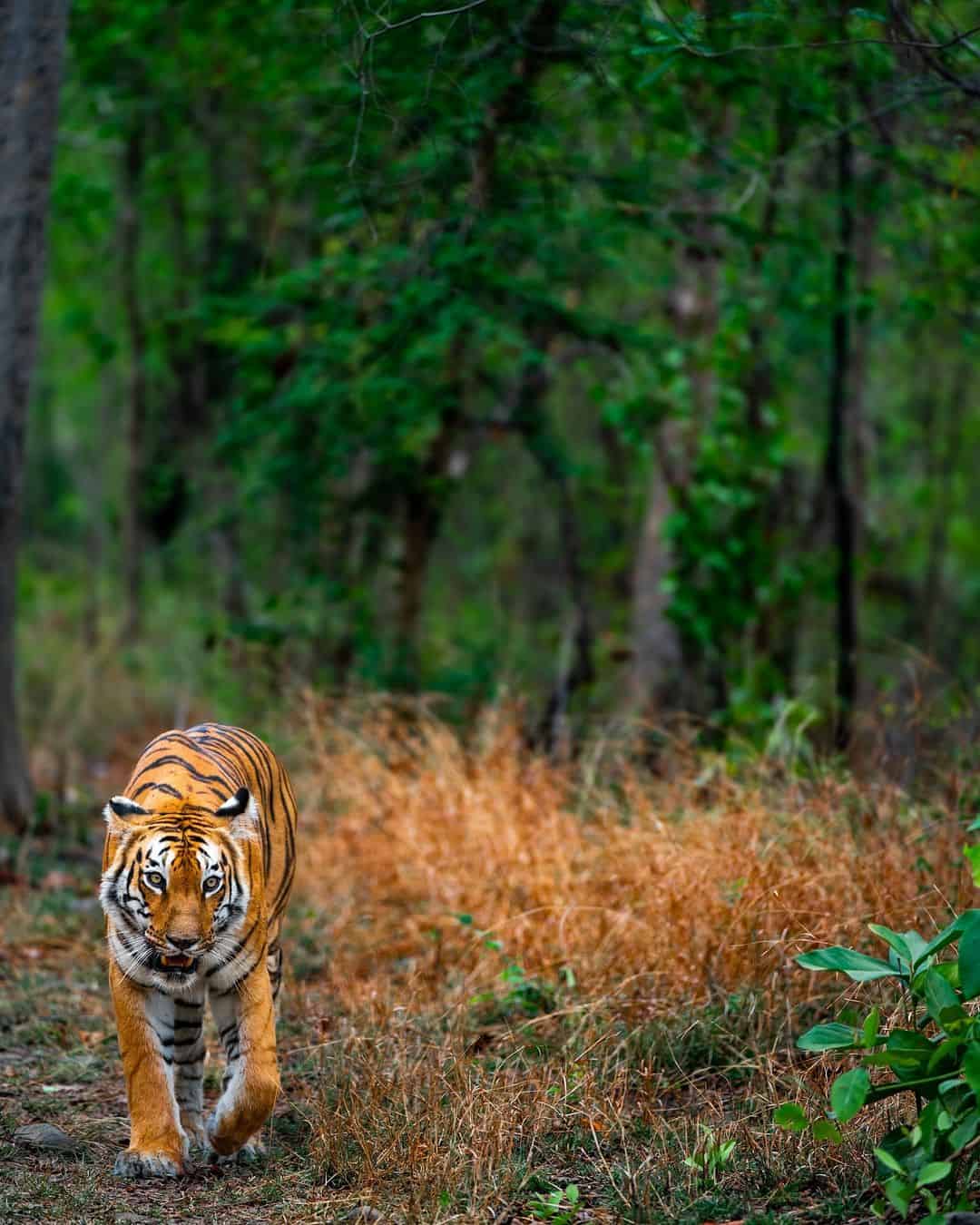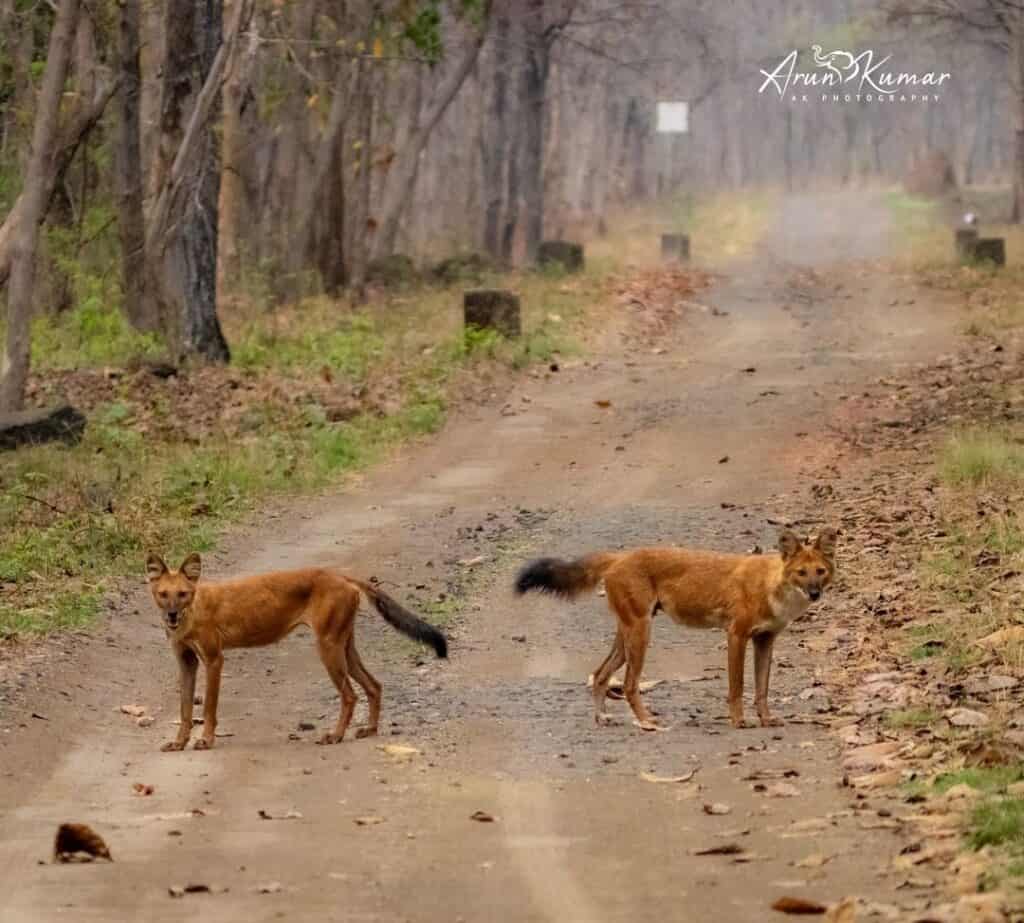Nestled in the district of Yavatmal, Maharashtra, the Tipeshwar Wildlife Sanctuary is a captivating destination for wildlife enthusiasts and nature lovers alike. Covering an area of approximately 148.63 sq. km, this sanctuary is home to a variety of flora and fauna, offering a peek into the vibrant biodiversity of the region. The undulating terrain, dotted with hills and lush vegetation, provides an ideal habitat for a wide range of wildlife species, making it a must-visit for those seeking an authentic wildlife experience.
The sanctuary enjoys a typical central Indian climate with three distinct seasons—summer, monsoon, and winter—each showing its influence on the sanctuary’s landscape and the behavior of its inhabitants. As a place relatively untouched by mass tourism, Tipeshwar allows visitors to immerse themselves in the wild. The sanctuary’s efforts in conservation and ensuring the well-being of its wildlife populations speak to the commitment to preserving nature’s treasures for future generations. For those yearning to witness the wild in its unadulterated form, Tipeshwar presents an adventure that’s both thrilling and fulfilling.
Key Takeaways
- Tipeshwar Wildlife Sanctuary is a biodiverse haven situated in Maharashtra, India.
- It features varied geography and a climate conducive to rich plant and animal life.
- The sanctuary offers an immersive wildlife experience with significant conservation efforts.
Geography and Climate of Tipeshwar Wildlife Sanctuary
Situated in the heart of Maharashtra, you’ll discover Tipeshwar Wildlife Sanctuary’s diverse geography and distinct weather patterns are essential for its rich biodiversity.
Landscape
At Tipeshwar Wildlife Sanctuary, you are greeted with a terrain that comprises hills, lush valleys, and streams. Covering an area of 148.63 square kilometers, this sanctuary is part of the larger ecosystem of the Yavatmal district. The sanctuary sits on the Parwa and Panarkawad ranges, offering you a mix of flat lands and slopes, ideal for a variety of wildlife habitats.
Weather Patterns
The climate at Tipeshwar is typically tropical, marked by three distinct seasons: summer, winter, and monsoon. During the summer, from March to June, temperatures can soar, making it very dry. Monsoon arrives in July and lasts till September, bringing heavy downpours that rejuvenate the sanctuary. Winters, from November to February, are pleasant and cool, considered the best time for you to visit and enjoy wildlife sightings.

Biodiversity
Your journey through Tipeshwar Wildlife Sanctuary will reveal diverse life forms that thrive within its borders. From an abundance of plant species to the bustling wildlife, including some endangered animals, this sanctuary is a nature’s marvel.
Flora
Tipeshwar is draped in a carpet of rich vegetation. Trees like Teak, Ain, Bija, and Dhawda form the primary canopy of this dry deciduous forest. The undergrowth is no less impressive, featuring a selection of bamboos, shrubs, and grasses. During the monsoon, the greenery explodes in lushness, offering a refreshing sight.
Fauna
Prepare your senses for the sights and sounds of a multitude of wildlife. The sanctuary is home to a variety of mammals like the famed Indian Bengal Tiger, apart from the tigers other mammals such as the Indian Leopard, the Indian Bison or Gaur, Sambar deer, Sloth bears, and the Four-Horned Antelope can be found in Tipeshwar. Birdwatchers can revel in the sounds of over 180 species of birds, including the Peafowl, Grey Junglefowl, and the Indian Pitta.
Endangered Species
The sanctuary hosts species classified as vulnerable or endangered, like the Bengal Tiger, Indian Leopard and the Indian Wild Dog, commonly known as the Dhole.

Conservation Efforts
The Tipeshwar Wildlife Sanctuary in Maharashtra is striving to ensure the survival of its unique ecosystem through concerted conservation efforts that include stringent protection initiatives, sustainable eco-tourism, and active community involvement.
Protection Initiatives
The Maharashtra Forest Department has implemented a series of measures to safeguard the diverse fauna and flora within Tipeshwar Sanctuary. Your awareness of their strict patrolling regimes is critical; these are enforced to prevent poaching and to protect the growing tiger population, which has been a notable success story attributed to these efforts. There are also endeavors to improve connectivity between Tipeshwar and other tiger habitats to promote genetic diversity.
Eco-Tourism
Eco-tourism at Tipeshwar is focused on minimizing the human footprint and educating visitors on the importance of protecting natural environments. When you visit, you’ll notice that infrastructure is designed to reduce environmental impact, and you are encouraged to partake in guided tours that support the sanctuary’s conservation mission. Your visit helps fund conservation activities and illustrates the value of the sanctuary beyond its borders.
Community Involvement
Building a mutualistic relationship with surrounding communities is essential for the sustainability of Tipeshwar’s ecosystem. Your understanding of the role you play as part of the community aids in the continuous efforts to manage human-wildlife conflict. Educational programs and employment opportunities are provided to the locals, which helps them to become active agents in the sanctuary’s conservation strategies.

Visitor Information
Tipeshwar Wildlife Sanctuary offers a variety of experiences to enhance your visit. Planning ahead ensures you make the most of your trip.
Safari Tours
Safari tours are a major attraction at Tipeshwar, giving you the chance to observe wildlife up close. Book your Tipeshwar Safari online in advance to secure your spot. Safaris run twice daily – early morning and late afternoon – when wildlife is most active.
Best Time to Visit
The sanctuary is open throughout the year; however, the ideal time to visit is from October to June. The summer months (April to June) offer higher chances of spotting tigers due to the scarce foliage and animals frequently visiting water sources.
Rules and Regulations
To preserve the sanctuary’s natural environment and ensure visitor safety, strict rules are enforced:
-
- Do not exit the safari vehicle.
- Littering is prohibited; all garbage must be taken out of the park.
- Silence is essential; avoid loud noises that can disturb the wildlife.
- Follow the guide’s instructions at all times for a safe experience.

Research and Monitoring
To ensure the protection and conservation of biodiversity, Tipeshwar Wildlife Sanctuary invests in rigorous research and monitoring practices. These efforts are crucial in understanding the situation within the sanctuary and making informed management decisions that benefit the wildlife and their habitats.
Wildlife Studies
In the sanctuary, numerous studies on wildlife populations are conducted to track the health and behavior of various species. A key focus has been on human-wildlife conflict, with research analyzing the patterns and mitigating the impacts of these encounters to promote coexistence. This is complemented by research into species diversity, such as the extensive study on butterfly diversity, which serves as an indicator of the ecological health of the sanctuary.
Habitat Management
Habitat management activities are informed by continuous monitoring. This includes the assessment of vegetation types and the impact of climate variability on different habitats within the sanctuary. For instance, researchers conduct systematic studies on the seasonal dynamics of bird diversity, which helps in understanding the ecological balance and guides efforts in preserving bird habitats. Your awareness of these studies helps appreciate the complexity and importance of habitat conservation in protecting the sanctuary’s biodiversity.
Frequently Asked Questions (FAQs)
- How many tigers are there in Tipeshwar?
There are nearly 20 tigers of various ages i.e adults, sub-adults and tiger cubs in Tipeshwar wildlife sanctuary. - How can one book a safari at the sanctuary?
To book a safari at Tipeshwar Wildlife Sanctuary, you can visit the official Maharashtra Eco-Tourism website, where online booking options are available. It’s advisable to book in advance to secure your spot.
- What are the accommodation options near the sanctuary?
There are several accommodation options ranging from resorts to guesthouses near Tipeshwar Wildlife Sanctuary. For a comfortable stay, consider Tipai Wildlife Luxuries, which offers amenities close to the sanctuary.
- What is the best way to reach Tipeshwar wildlife sanctuary?
The best way to reach Tipeshwar Wildlife Sanctuary is by road. It is situated approximately 172 kilometers from Yavatmal and can be accessed via taxi or private vehicle. The nearest railway station to Tipeshwar wildlife sanctuary is Adilabad Railway Station, about 35 kilometers away.
- What are the ticket prices for entering Tipeshwar sanctuary?
Ticket prices for the sanctuary are subject to change and may vary based on age, nationality, and type of safari. It is recommended to check the Maharashtra Eco-Tourism website for the most current pricing.
- Which gate offers the best safari experience at Tipeshwar?
There are several entry gates to Tipeshwar Wildlife Sanctuary, primarily Sunna, Mathani and Kodori. Sunna is the suggested gate to enter the park because it is closer to NH44. Pandarkawda, the nearest town, is approximately 15 km away from Sunna Gate. However, safari experiences can vary based on animal movement and weather conditions. It’s advisable to inquire locally or with your resort to get the latest safari gate recommendations.
- What type of wildlife can be seen in the sanctuary?
Tipeshwar Wildlife Sanctuary is home to a variety of wildlife including tigers, leopards, sloth bears, sambar, and numerous bird species. The sanctuary is well-known for its robust tiger population.



1 thought on “Tipeshwar Wildlife Sanctuary: A Guide to its Biodiverse Ecosystem”